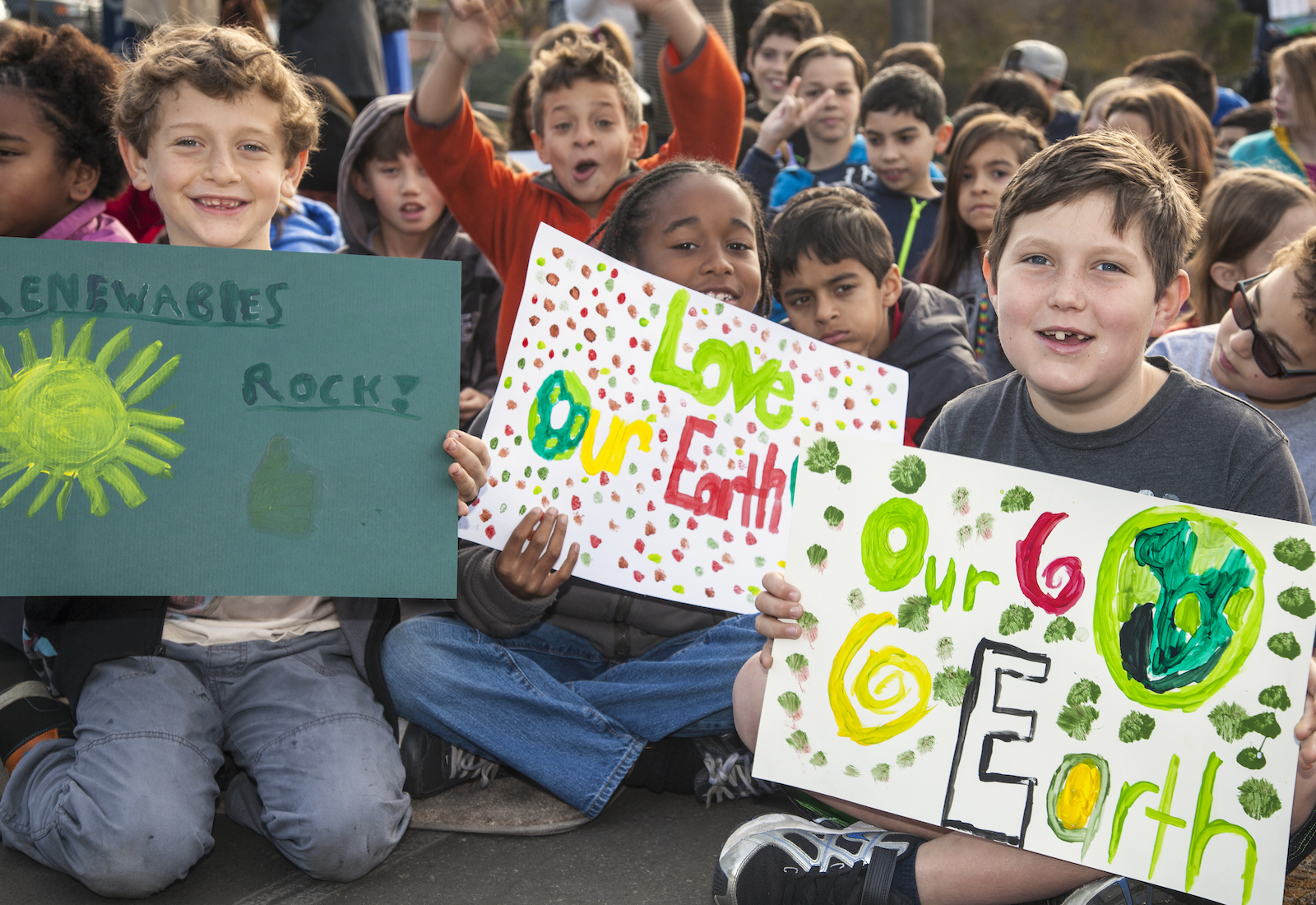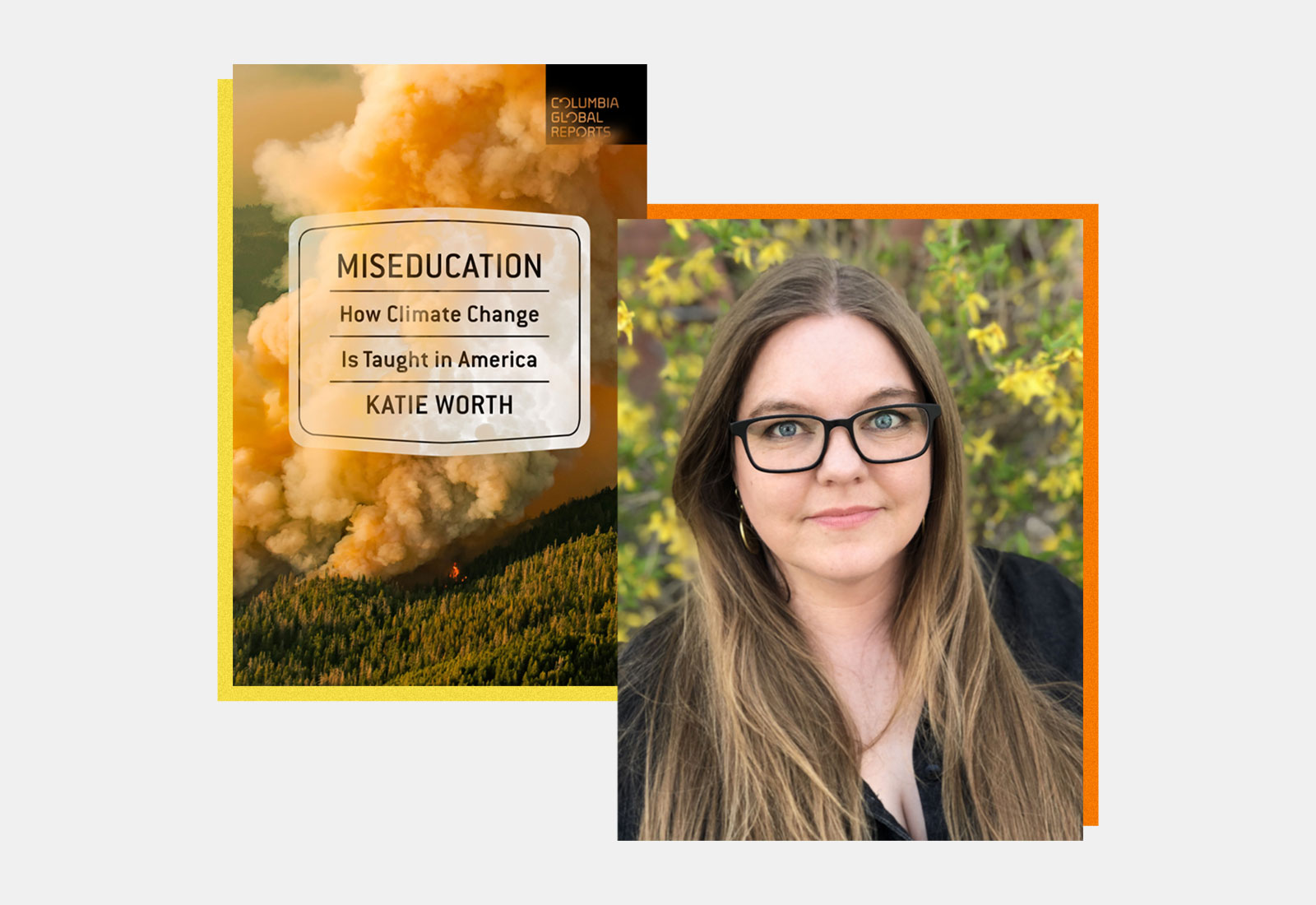From school strikes and congressional sit-ins to demonstrations at this year’s United Nations climate conference in Glasgow, young people are leading the fight against climate change. Poll after poll shows that Gen Z and Millennials are by far the generations most alarmedabout the climate crisis, and the most engaged in efforts to address it.
But a new book from the journalist Katie Worth makes it clear that many young people still aren’t getting accurate information about climate change in school. In Miseducation, Worth exposes systemic problems with the way U.S. public schools teach climate change. From kindergarten to high school, she reports, students are still being taught that the climate “has always changed” or reading textbooks that present global warming as a “debate.” That’s if climate change comes up in the classroom at all: According to a 2019 NPR/Ipsos poll, some 55 percent of teachers don’t cover climate or even talk to their students about it — mostly because they say it’s “not related to the subject(s)” they teach.
“There’s a real inequity in terms of what kids are learning about this problem that’s defining the century that they’re born into,” Worth told Grist. At best, she added, public schools are failing to engage students who want to learn about climate change. At worst, they’re sowing doubt into kids’ impressionable minds, undermining efforts to address the looming crisis.
Worth’s book is organized into sections that illustrate the problem’s many layers, beginning with teachers who are unable or unwilling to teach the science of climate change. Worth found climate deniers in many of the schools she visited, like a high school environmental sciences teacher in Arkansas who insisted that climate models were too complex to confirm whether humans were driving changes in Earth’s temperature. He told Worth that the conclusions of the latest report from the Intergovernmental Panel on Climate Change were too “political,” and that the virtually universal scientific consensus on global warming was “not based on real science.”
Other instructors simply lack the knowledge to teach climate change effectively, Worth said, having received little to no climate change education themselves. According to a 2016 study from the National Center for Science Education, fewer than half of all teachers listened to at least one lecture on climate change during their schooling, and most have never pursued continuing education on the topic after college.

But the problem is much larger than teachers’ political beliefs or training. According to Worth, climate misinformation often weasels its way into classrooms in more insidious ways, much of it due to calculated efforts from the fossil fuel industry. “There’s been a multibillion-dollar campaign to make the American public doubt climate change,” she said, “and some of it has been specifically targeted at children.”
The campaign includes industry-created lesson plans, which overburdened teachers are all too happy to welcome into the classroom. In her book, Worth describes a decades-long effort to target children with fossil fuel–friendly educational materials — like an ExxonMobil comic book that taught 1970s kids about fossil fuel supply and demand. To this day, Worth found fossil fuel–funded educational programs in at least 18 states, dotted with friendly cartoon characters like “Oliver Oilpatch” and “Petro Pete.” These programs tend to teach children about the primacy of the free market, equating energy with freedom and promoting the idea that energy regulation will hurt the economy.
“It is among the most insidious and among the most effective forms of propaganda,” said Carroll Muffett, president and CEO of the nonprofit Center for International Environmental Law, addressing the topic on a recent episode of the podcast Drilled.
Oil and gas industry groups have also spent decades training workers to propagandize classrooms in person — a practice that is ongoing. In one chapter, Worth describes a visit to an Arkansas middle school, where a science classroom is visited by a representative of the state’s oil and gas industry. The industry rep tells students about insurmountable “problems” with renewable energy sources, urging them to consider what their “standard of value” is: “Is human life the most important? … Or is pristine nature more important?” The representative implies that addressing global warming would cut off the students’ electricity and plunge them into the conditions “of a third-world country like India.”
That’s not the end of the oil and gas industry’s efforts to water down or even do away with climate education in public schools. For example, Worth devotes part of a chapter to the conservative movement to pass state-level “balanced treatment” laws, which license teachers to cover the “scientific strengths and weaknesses” of issues that matter to the right — beginning with evolution in the 1970s and 80s and ultimately expanding to include global warming in the early 2000s. Even textbooks are an area of contention, with conservative lawmakers influencing textbook publishers to lay off the climate science for books sold in their states. Worth said the consequence has been a “red state, blue state” divide in the way kids learn about climate change.

Frank Niepold, climate education senior program manager for the National Oceanic and Atmospheric Administration, designs empirical climate education programs for public schools and may be the country’s most powerful climate education advocate, according to Worth. In an interview with Grist, Niepold lamented the political divide affecting climate education but stressed that there can be educational shortcomings in any jurisdiction — whether red or blue. Even in states that have adopted progressive climate education standards, implementation often falls short due to teachers’ lack of training, or a failure to incorporate the standards into non-science subjects. “What I’m hearing from students is they’re really not getting what they need from schools,” Niepold said, likening their piecemeal climate education to “the holiest of Swiss cheese.”
The inadequacies of the public school system have forced many young people to look elsewhere for a comprehensive climate education — social media, their peers, youth-led advocacy groups. Many kids find it. But according to Worth, there’s a parallel world of children whose vision is being blinkered by their incomplete public school education. In one eerie example cited in her book, Worth travels to a makeshift classroom in a converted hardware store near Paradise, California. Students had relocated there after their own middle school burned down in the Camp Fire of 2018 — an enormous megafire that scientists say was exacerbated by climate change–related drought and heat. But when the students were asked what they thought about global warming, they wrote: “It hasn’t affected me [sic] life at all yet. … I don’t know if it will do anything to my life in fifty years because I don’t know if i [sic] believe it yet.”
According to Joseph Henderson, a Paul’s Smith College lecturer in environment and society who focuses on climate change education, there’s a chasm between the climate miseducation being proffered at most public schools and the rigorous, multidisciplinary, intersectional, climate justice-based schooling that students need. But he circled back to the polling showing that the majority of teachers aren’t even talking about climate in their classrooms. “We’d go a long way if we just taught it,” he said. “Get teachers to integrate it, and then we can talk about where to go from there.”



